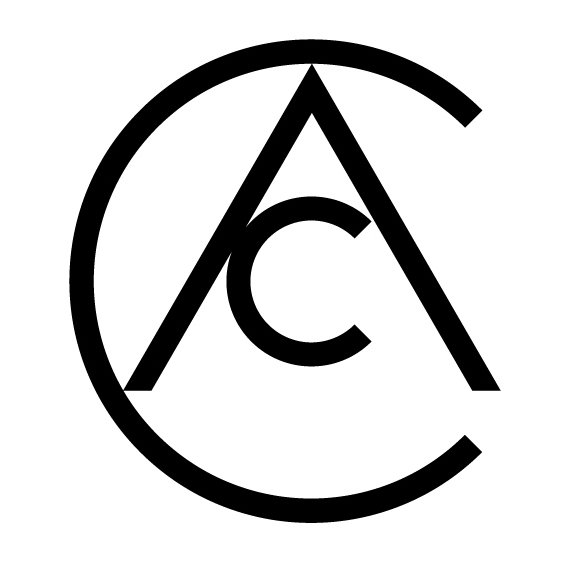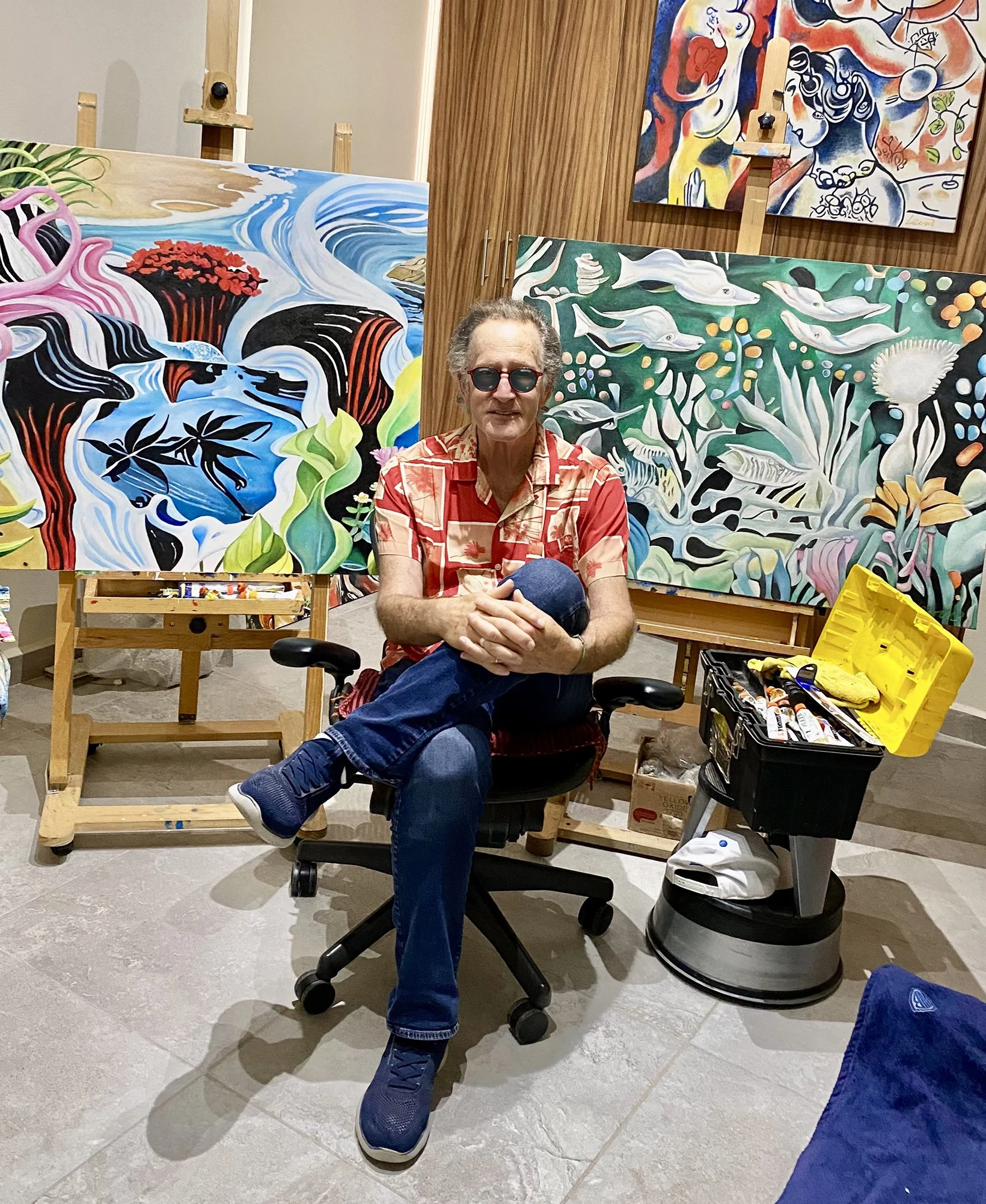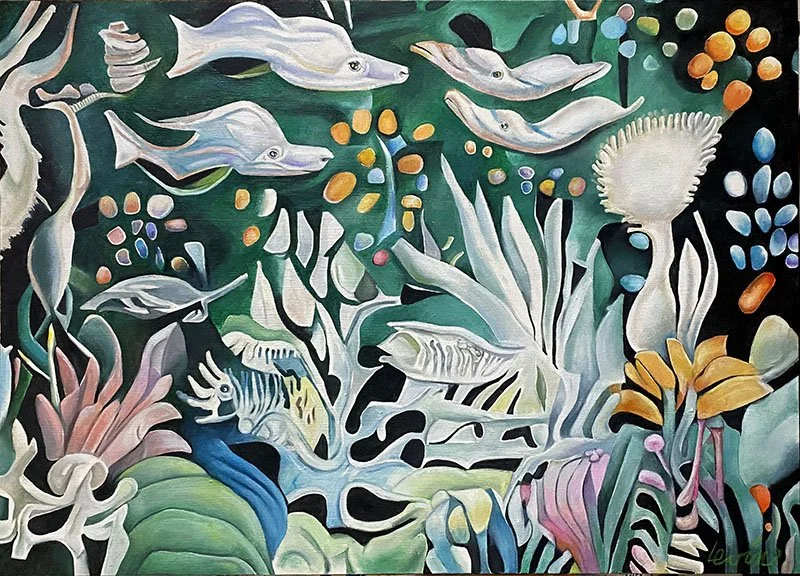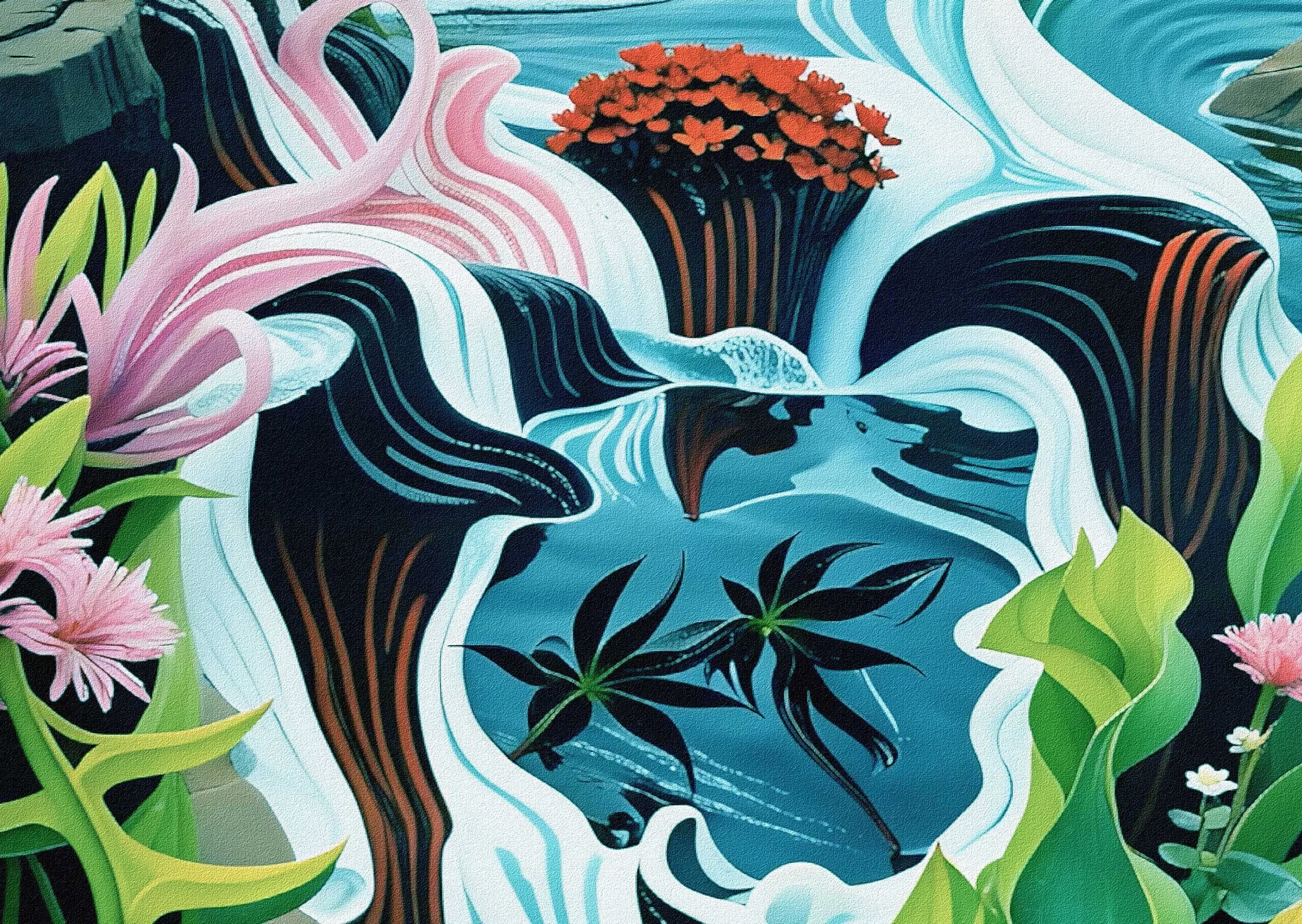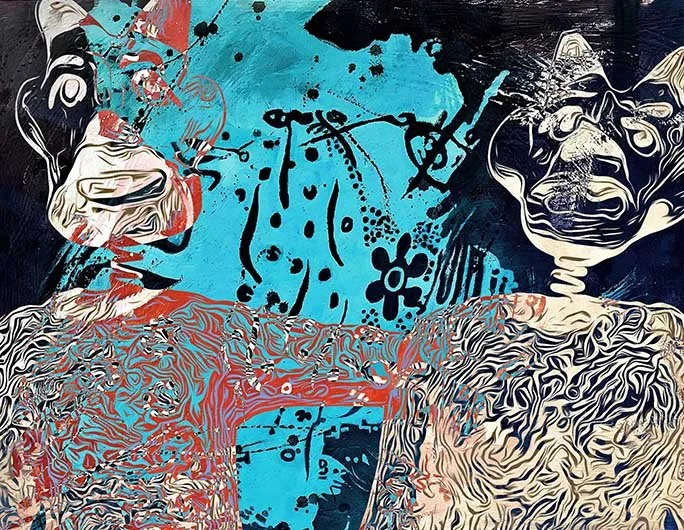Interview with Lon Levin
http://www.levinlandstudio.com/
My work pokes at that uneasy space between structure and entropy — what I like to call “controlled chaos,” because frankly, that’s what life looks like when you take the training wheels off. Every piece is its own little ecosystem, humming along with its own rules, moods, and mischief. I’m fascinated by how order crawls out of disorder, how meaning sneaks in through the cracks when forms, colors, and movements collide like they’ve had too much coffee.
Two things keep me grounded: saving the oceans and celebrating love. The oceans are the big blue reminder that we’re all in the same leaky boat, and love is the glue that keeps the whole mess worth dealing with. One’s survival, one’s connection — both are non-negotiable if we plan on sticking around.
So yeah, I build worlds where beauty, chaos, and compassion try to get along. Sometimes they dance, sometimes they butt heads, but they always show up — just like the rest of us, trying to make sense of the madness without losing the joke.
Your notion of controlled chaos suggests that each canvas is an ecosystem where entropy becomes a generative force rather than a threat to form. How consciously do you construct this ecological model of image-making, and do you see your paintings as rehearsals for understanding how fragile systems, natural, emotional, or political, negotiate their own survival?
A truly challenging question. My art is like building a small world on a canvas. I start with a design plan, but once I put the first marks down, the painting begins to act on its own even in the initial stages. Shapes and colors start “talking” to each other, sometimes arguing, sometimes agreeing. It’s up to me to decide which way to go.
I don’t try to control everything. I let “happy mistakes” happen, because that’s what makes the painting feel alive—like it could change at any moment.
And yes, my paintings are kind of like practice for understanding how real life works. Nature, feelings, even the world around us—they’re all fragile, and they’re always shifting. Nothing stays perfect or still.
So the painting becomes a small version of that: different parts trying to live together, figure things out, and stay balanced. If it feels alive when it’s done, then I know that I did my job.
You often describe meaning as something that “emerges” from the random interactions of marks, colors, and gestures. To what extent do you consider your visual language a mirror of natural self-organizing systems, particularly the ocean, which you treat as both subject and metaphor? Is the canvas, for you, a microcosm for ecological interdependence?
When I paint, the marks and colors don’t line up because I force them to. They move around, mix, and react to each other, kind of like waves and fish and currents all doing their own thing. Different size patterns show up on their own, almost like they decided to be there.
The ocean inspires me because it’s always moving and changing, but somehow everything still fits together. That’s what I try to do on the canvas.
So the painting becomes its own world where every line and color depends on the others. If one moves, they all feel it. The picture only works when everything gets along — just like an ecosystem in nature.
Your commitment to the preservation of the oceans enters your work less through representation than through structure, through movement, depth, turbulence, and flow. How do you conceptualize the ocean within your practice: as an image, as a dynamic system of forces, or as an ethical imperative shaping your approach to constructing and deconstructing order?
For me, the ocean isn’t just something to draw — it’s something that teaches me how to make art. I don’t try to paint perfect waves. There are enough great artists who do. Instead, I simulate how the ocean behaves: always moving, pushing, swirling, calming down, then getting wild again. That’s how I make my marks.
The ocean also reminds me to care about things. I grew up as a surfer. I’ve spent my life around it, and I know it needs protecting. So when I paint, I try to work the way the ocean works — sometimes neat, sometimes messy — because real balance is always changing, just like nature.
The ocean is kind of like my teacher, my guide, and my reason all at once. It helps me decide how to build a painting, how to break it apart, and when to let things flow.
You frame love not as sentimentality but as an ontological principle, a connective energy that binds disparate forms into coherence. How do you translate this metaphysical idea into material strategies of gesture, layering, and spatial tension, while avoiding the historical clichés traditionally attached to depictions of love in art?
Cliches are the death of art. I don’t show love by painting hearts or mushy romantic icon stuff. I think of love like glue — something that helps different things stick together and make sense.
So on the canvas, love shows up in the way lines reach toward each other, or colors mix into one another, or shapes push and pull like they’re trying to stay connected. If a brushstroke wraps around another, that’s my way of showing love holding things together. If two shapes look like they’re fighting a little but still staying close, that’s love too — the real kind, not the perfect kind.
That’s how I keep it from looking cheesy. I don’t draw love, I don’t idolize the human form. — I let the painting act like love. Everything on the canvas tries to connect, help, or respond to something else. That makes it feel alive and true, not fake.
Many of your compositions seem to oscillate between rupture and repair, destruction and cohesion, tensions that echo both ecological precarity and emotional resilience. To what degree is this interplay intentional, and do you see your work proposing that beauty arises not from harmony but from conflict and recomposition?
A lot of my paintings look like they’re breaking apart and then fixing themselves again. That’s on purpose. I’ll make a mark that feels like it “ruins” something, and then I let the painting figure out how to come back together in a new way. My hand does the rest. It keeps me fresh.
I do this because nature works like that — things fall apart, then grow back — and people do too. We get hurt, we heal, we change.
So yes, I think beauty doesn’t come from everything being perfect. It comes from seeing how things can break, shift, and still find a way to fit together again. Sometimes it’s a struggle and sometimes it’s not. That’s where the painting feels alive.
By describing each artwork as a “self-contained ecosystem,” you imply an enclosed world governed by internal laws. How do you manage the boundary between that autonomy and the external realities — environmental crisis, social fragmentation, personal narratives that inevitably seep into your practice? Is the canvas a refuge, a laboratory, or a confrontation?
When I say each painting is its own little ecosystem, I don’t mean it’s cut off from the real world. It has its own rules, but real life still sneaks in — I’m always dealing with outside forces. Like worries about the planet, problems people face, and my own memories. They all shape the choices I make.
So the canvas is a bit of everything. Sometimes it’s a refuge, a place where things feel calmer. Sometimes it’s a laboratory, where I test ideas and see what happens. And sometimes it’s a confrontation, when the painting fights back and makes me deal with stuff I’d rather ignore. That’s when I talk a walk with my dog, Juanito!
The fact is all of the concerns mix together. That’s how the world on the canvas stays alive — just like we do.
Your marks behave like agents within a complex system colliding, dispersing, mutating almost as if they follow an internal logic of fluid dynamics. How does your background in cinematic advertising, with its strict demands for clarity and control, shape the way you now choreograph visual entropy? Is this turn toward disorder a liberation from that past or a reconfiguration of it?
Yes and yes. My years in cinematic advertising drilled a very specific kind of discipline into me: absolute clarity, tight composition, and zero wasted motion. Every creation had to deliver a message instantly. There was no room for wandering or ambiguity. That training is still in my bones — and weirdly, it’s what lets me choreograph chaos now without letting it collapse into noise.
So when you see those marks behaving like little agents in a fluid system — colliding, drifting, mutating — that isn’t me abandoning control. It’s me reframing it. The old cinematic instinct still guides the structure: I know where to place contrast, how to pace visual beats, how to let the eye travel. But instead of using that discipline to sell a narrative, I use it to keep the entropy alive without letting it drown itself.
Is this turn toward disorder a liberation? Hell yes — but it’s not a rejection of the past. It’s more like recycling it. All that training in precision now gives me the confidence to loosen the reins. I can let the painting misbehave because I know how to pull it back from the edge. The chaos isn’t random; it’s choreographed.
In the end, my past didn’t disappear — it evolved. The control taught by advertising became the skeleton, and the disorder became the breath.
Your practice brings together two domains often treated as incompatible in critical discourse: ecological fragility and human affect. How do you construct a visual grammar in which love and oceanic vulnerability do not simply coexist but function as parallel forces shaping the same aesthetic space?
I wouldn’t say my practice unites ecological fragility and human affect so much as it lets them live in neighboring apartments and occasionally eavesdrop on each other. They’re separate entities with their own visual grammars — one speaks in bleached corals and stressed coastlines, the other in warmth, longing, and the messy choreography of the heart. They don’t coexist on the canvas by design; I’m not staging a diplomatic summit between love and oceanic collapse.
But they do share a landlord: me.
So even when I’m painting in strictly one dialect — the emotional or the ecological — the other inevitably leaves fingerprints. My “visual grammar” isn’t about fusing the two domains; it’s about letting the viewer sense that both are generated by the same interior weather system. The same currents that shape how I love also shape how I mourn what’s happening to the sea.
If the work feels like those forces run parallel, it’s because they originate from the same source — my own anxieties, hopes, obsessions, and, yes, affections. They don’t coexist in the frame, but they coexist in me. And that’s usually enough to make the aesthetic space hum with both.
Your methodology transforms chaos from accident into strategy, placing your work in dialogue with Abstract Expressionism, information theory, and contemporary ecological art. Where do you situate your practice within this expanded field, and do you see your canvases as diagrams of survival, mapping how organisms and relationships navigate instability?
I don’t treat chaos as an accident anymore — in my studio it’s more like a collaborator who shows up uninvited but always has something useful to say. I’m not trying to reenact Abstract Expressionism or lecture anyone on information theory; I’m just admitting that instability is the real climate we all live in, so it might as well shape the work.
Where do I place my practice in this expanded field? Somewhere between a tide pool and a glitch. I pull a sense of structure from information systems, and the ecological tension that runs under everything I do. They mix because that’s how the world feels right now — layered, unstable, and very alive.
Are the canvases diagrams of survival? Not literally. I’m not drawing maps for fish or relationship flowcharts. But the paintings do act like notes on how living things — humans included — navigate messy conditions. Some marks cling, some drift, some adapt, some dissolve. That’s the rhythm of survival today.
So yes, the work tracks how we all move through instability, but in a more poetic way — not step-by-step instructions, just an honest record of what it feels like to keep going.
In an era increasingly defined by planetary crisis and social disconnection, your work creates environments where beauty, chaos, and compassion coexist in precarious balance. What responsibility do you believe the artist holds in articulating forms of resilience? And how does your own trajectory from Hollywood art director to children’s book illustrator to painter of ecosystems shape the ethical dimension of what you make?
Responsibility? Me? Look, the world’s in a rough patch — climate stress, social drift, everyone half-checked-out on their phones. I don’t pretend artists can fix all that, but we can point to the mess and say, “Here’s what we’re living through… and here’s why it’s still worth caring.” If that gives people a tiny spark of resilience, then the art’s doing its job.
I try to create spaces where beauty sits next to chaos and compassion doesn’t feel corny. When people see that mix, they remember that fragility and hope can actually stand side-by-side. That’s resilience in a small, human way.
As for my own path — Hollywood to kids’ books to ecosystems — each stage taught me something useful. Hollywood sharpened my storytelling instincts. Children’s books taught me clarity and heart. And painting the natural world reminded me that the planet doesn’t negotiate; it just responds. Those experiences shape the ethics of my work: stay honest, stay awake, and make something that might help someone feel connected instead of numb.
So if I have a responsibility, it’s this: offer a visual reminder that we’re still capable of paying attention, of caring, and of imagining a future that isn’t entirely falling apart. That’s resilience, too — just delivered with paint instead of speeches.
